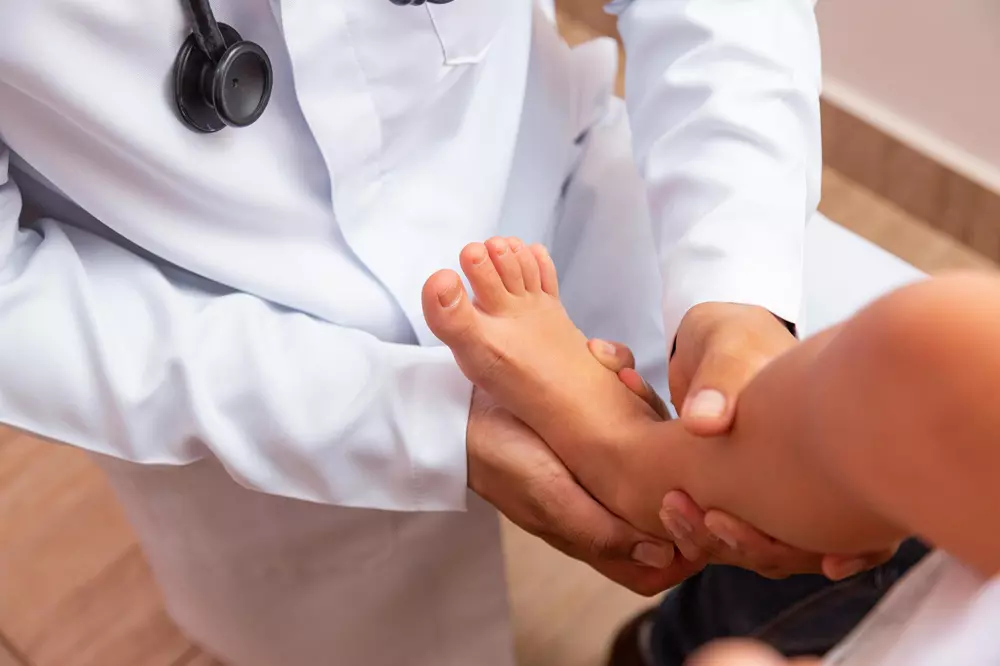
A blood blister forms when blood vessels near the surface of the skin are damaged, typically due to pinching or bruising. Unlike a typical open wound, the skin doesn’t break, so the blood collects beneath the surface, forming a bubble. These blisters are similar to friction blisters, but they contain blood instead of clear fluid.
Blood blisters usually don’t need medical treatment and will heal on their own in about three to seven days.
Request an AppointmentCauses and Symptoms of Blood Blisters
Blood blisters are caused by ruptured blood vessels near the skin’s surface. This typically happens after an injury that pinches the skin, such as slamming your toe in a door, kicking something hard, or stubbing your toe. They can also result from persistent pressure from ill-fitting shoes.
The pain from a blood blister is usually felt when it first forms. Blood blisters are similar to friction blisters in size and shape, but they appear darker due to the trapped blood between the skin layers.
Blood Blister Treatment
Most blood blisters do not require medical care and will heal naturally. It’s important not to pop the blood blister, as the skin covering it serves as a protective barrier. The blister will heal itself over time, with new skin forming beneath it.
If a blood blister is accidentally punctured, only a small amount of blood will escape. However, the skin underneath may feel raw and painful.
To treat a blood blister:
- Cover it with a sterile, soft dressing to protect it from further injury or irritation.
- Wash it regularly to keep the area clean.
- If the blister breaks, apply an antiseptic ointment to prevent infection.
- Keep the skin intact over the blister, even if it ruptures, as it provides natural protection from bacteria.
If a blood blister does not heal on its own or shows signs of infection, such as warmth, redness, or swelling, seek medical attention promptly.